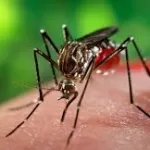In a groundbreaking discovery, scientists studying a single-celled organism called Chromosphaera perkinsii have gained fresh insights into the ancient question: “Which came first, the chicken or the egg?” This biological puzzle, which has intrigued philosophers, biologists, and curious minds for centuries, might be closer to an answer than ever before, thanks to this unassuming organism.
The Discovery of Chromosphaera perkinsii
The story begins in 2017, when a team of scientists conducting an expedition around Hawaii stumbled upon C. perkinsii in marine sediments. Though recently discovered, this microscopic species has a deep evolutionary history, with signs of its existence dating back over a billion years—well before the first animals, including chickens, roamed the Earth.
Research conducted by Professor Omaya Dudin and her team at the University of Geneva (UNIGE) suggests that C. perkinsii might be one of the earliest precursors to multicellular life. Their study has opened new doors in our understanding of life’s origins and, intriguingly, brought new evidence to the chicken-or-egg debate.
A Glimpse Into Early Multicellularity
While C. perkinsii is a unicellular organism, it exhibits behavior akin to the embryonic stages of multicellular life. As observed by the UNIGE team, C. perkinsii forms multicellular structures during certain stages of its life cycle, bearing striking similarities to the earliest stages of animal embryo development. When the cells reach maximum size, they divide into colonies, which resemble a cellular “egg” structure and persist throughout their life cycle.
This behavior hints at a genetic foundation for multicellularity, suggesting that the processes we associate with complex animal development may have ancient origins that existed in single-celled ancestors over a billion years ago.
The Genetic Connection to Animal Embryos
The team also collaborated with Dr. John Burns at the Bigelow Laboratory for Ocean Sciences, finding that the genetic activity in C. perkinsii colonies parallels that seen in animal embryos. This suggests that the genetic mechanisms that guide multicellular growth may have been present long before animals appeared on Earth.
According to Marine Olivetta, the study’s first author and a technician in UNIGE’s Department of Biochemistry, “It’s fascinating. A species discovered so recently allows us to glimpse over a billion years into the past.” This discovery points to the possibility that the principles of embryonic development existed well before animals and that these mechanisms may have evolved separately in various lineages, including C. perkinsii.
Rethinking the Chicken and Egg
So, does this mean the egg came first? In a sense, yes—if “egg” refers to the reproductive cellular structures found in single-celled ancestors like C. perkinsii. The genetic building blocks that form the foundation of reproductive cells, or eggs, may have predated the evolution of animals like chickens. This new perspective could reshape our understanding of evolution and challenges traditional concepts of multicellularity.
A New Perspective on Evolutionary History
The discovery of C. perkinsii underscores the vast complexity of life’s history. “Who knows what other secrets are hidden within the depths of our vast oceans?” wonders Professor Dudin, hinting that this find may be one of many yet to come.
Published in the journal Nature, this study offers a profound shift in how scientists view evolutionary development, moving us closer to answering one of biology’s most famous questions. The chicken may owe its evolutionary success to a single-celled ancestor, but it seems the egg—and the mechanisms to form it—came first after all.












